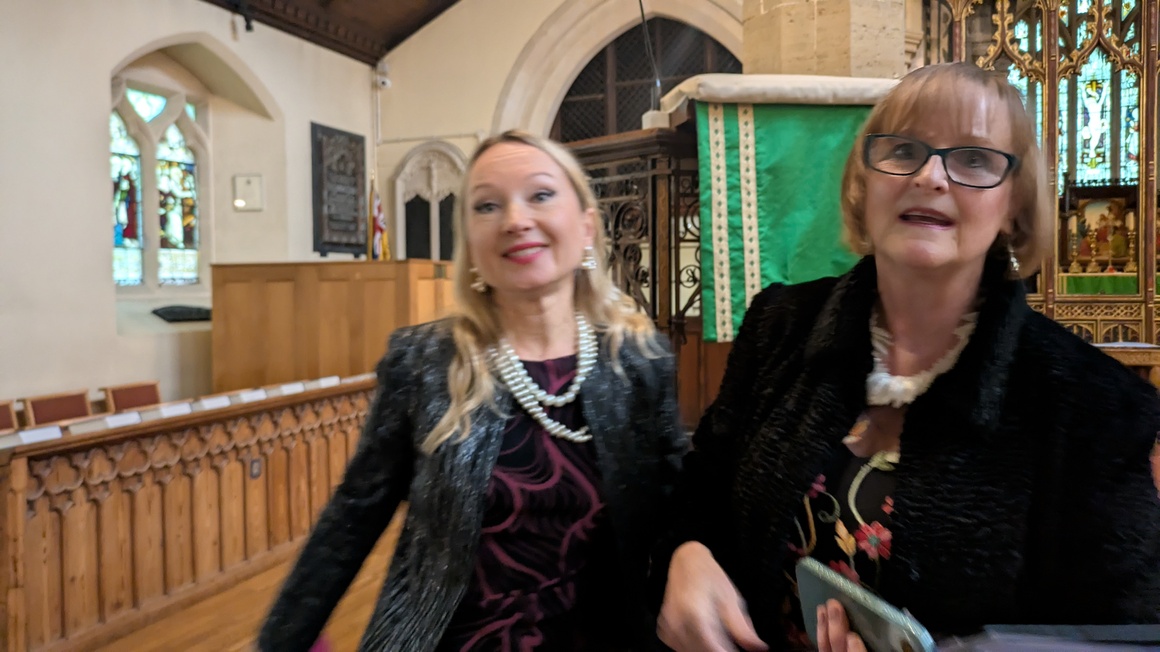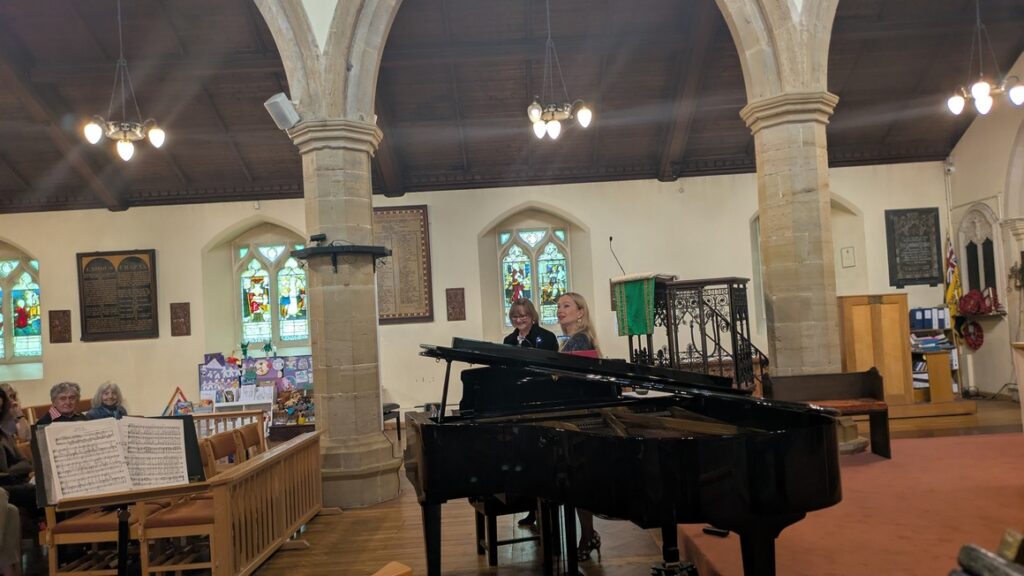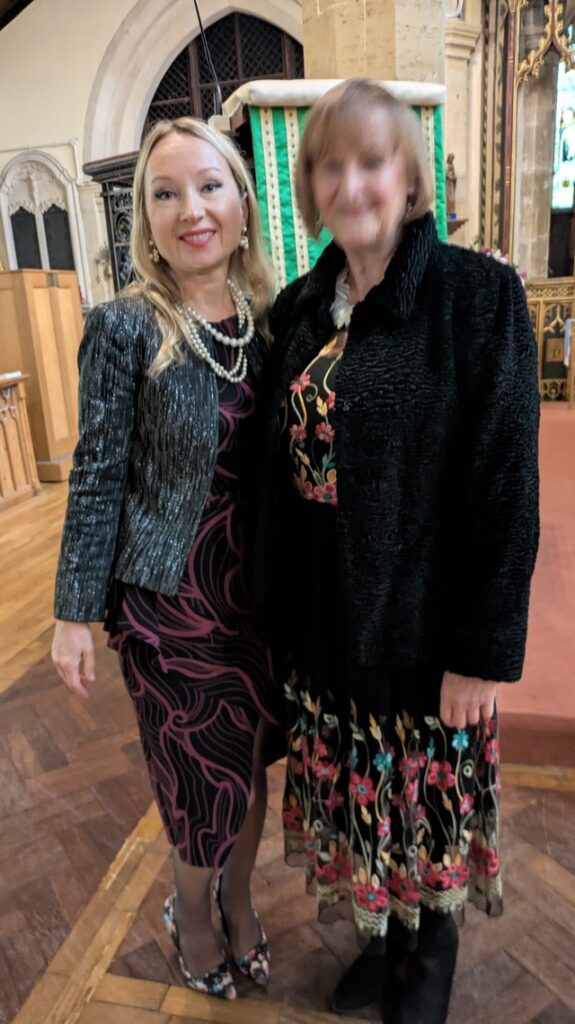Review by Simon Jenner, September 17 2025
Caroline Goodwin and Zhanna Kemp have assembled a fine collection of women composers’ songs.
Carolina Bellavittoria on whom I can find nothing, has written two songs ‘Padre nostro’ a prayer ‘Apressatevi a Dio’ in particular are passionate of moment and declamatory power. The second is memorable
In between the great Barbara Strozzin(1619-77) who published more music than any other Venetian composer if the time is one of the greatest mid baroque composers, certainly in vocal music. Her plangent dark ‘Che si puo fare’ is full of erotic retreat and memorable invention. A dark piece worthy of any composer following Monteverdi.
Avril (Gwendoline) Coleridge Taylor (1903-98) was the daughter of the great Samuel Coleridge-Taylor. Discriminated in racial and gender grounds she now emerged as a composer of importance and worthy to follow her father. Allows less scope she keeps to smaller forms but herv’Mr. Sun’s ISA work written at 19 touched with the new influence of Ivor Novello and full of quiet wit charm and feeling. There’s far more from Avril’s maturity to explore. She ended her life in Seaford.
Samuel (1875-1912) meanwhile is now restored to his old w as one of the great generation of British composers including Vaughan Williams and Holst. His ‘Until’ is a romantic and powerful song of year ung. Goodwin wonders if the next song ‘Low Breathing Winds’ as a text influenced Avril in her choice of ‘Mr Sun’s. It’s a romantic open-hearted song with Coleridge-Taylor’s characteristic subtle and powerful off-kilter modulations, very much English as well as Dvorak-inflected early in to become a style others were influenced by. It’s piano postlude give a sense of the melodic powder rippling underneath.
Kemp understands some of the Russian byways like few others. Leokadya Kashperova (1872-1940) was a renowned teacher at the St Petersburg Conservatoire who taught Stravinsky the piano. Recently her surviving output (tragically some is lost) has been increasingly rediscovered and played. Particularly her surviving Piano Trio.
She has more than a vein of genius, despite Stravinsky’s dismissal of her as a “blockhead”. If the three piano solos Kemp plays the longing in ‘Rose I’ has become just my celebrated, and we’re talking in the last half decade! ‘Rose II’ is a more sanguine piece with a mood if both melodic profile of Glazunov. It’s deliberately a piece that writes white and a catchy phrase over a warm bass. ‘Leaf’ owns a gentler valedictory feel again major key rumination, full of the shafts of summer. Late summer perhaps. Kemp dispatches consummately.
Alexandra Pakhmutova (b. 1929) is a contemporary Soviet and Russian composer I’ve never encountered. She’s known for her 400 mainly popular Russian music songs but her range is huge. Reputedly President Brezhnev’s favourite composer she’s far more than that doubtful accolade implies. ‘Tenderness’ which celebrates intimate love and delivers with Goodwin really rounding out this melancholic gem. The piano part is haunting and Goodwins vocal lines soars over it effortlessly.
Betty Roe (born 1930) has been a very active composer in smaller forms particularly in education. Her songs are celebrated (I have a CD of them). ‘For a Soldier’ is a fine art song with a fuller late Romantic engagement.
Lilian Ray ‘The Sunshine if your Smile’ from 1913 is in fact written by a man – John Neat – worried by the gendered ‘female” quality of his writing. This is a song worthy of Lisa Lehmann at her best which is praise. A real gem with the opening descending line a real hook..
Amy Beach (1857-1944) is now celebrated as America’s first major concert composer outshining hr Boston contemporaries like Chadwick. Her ‘Fairy Lullaby’ ‘is astrological song full of lilting light heartedness with sideslips into a more tenebrous world of fairyland.
The Year’s at the Spring’ is a more passionate and tumultuous invocation to love and optimism and Goodwin here is overwhelming especially in her too notes. It’s brief but stunning.
The wonderful Madeleine Dring (1823-77( sadly chain-smoked too much but was for all her life celebrated as actor singer and composer. Her glamorous life luckily centred mostly on compositions. Her Festival Overture for piano and orchestra of 1951 for the Festival if Britain is celebrated. And much later her flute clarinet and piano trio. Her sound is rather echt Les Six. There a touch more of Poulenc and Le Six than say Walton. But she sounds like no one else.
Shakespeare’s ‘It was a Lover and his Lass’ gets the Dring treatment with her own singing voice coming through. Dring brings in a refrain and ongoing melismatic middle passage full of stops and twirls. There’s wit and sex and sky fun all through. Dring loves syncopation and we get a that but every time there’s something unpredictable and zesty Dring surprises us with.
An encore from the Queen of Hawaii as the Americans occupied her country rounds off. With audience participation. The song itself like Hawaii has been occupied and appropriated. Goodwin who also wields a guitar and accompanied Kemp in piano sings till we get the refrain. A unique recital and with luck another next year. Gloriously rendered, with musical discoveries in nearly every song
Photo Credit Simon Jenner




